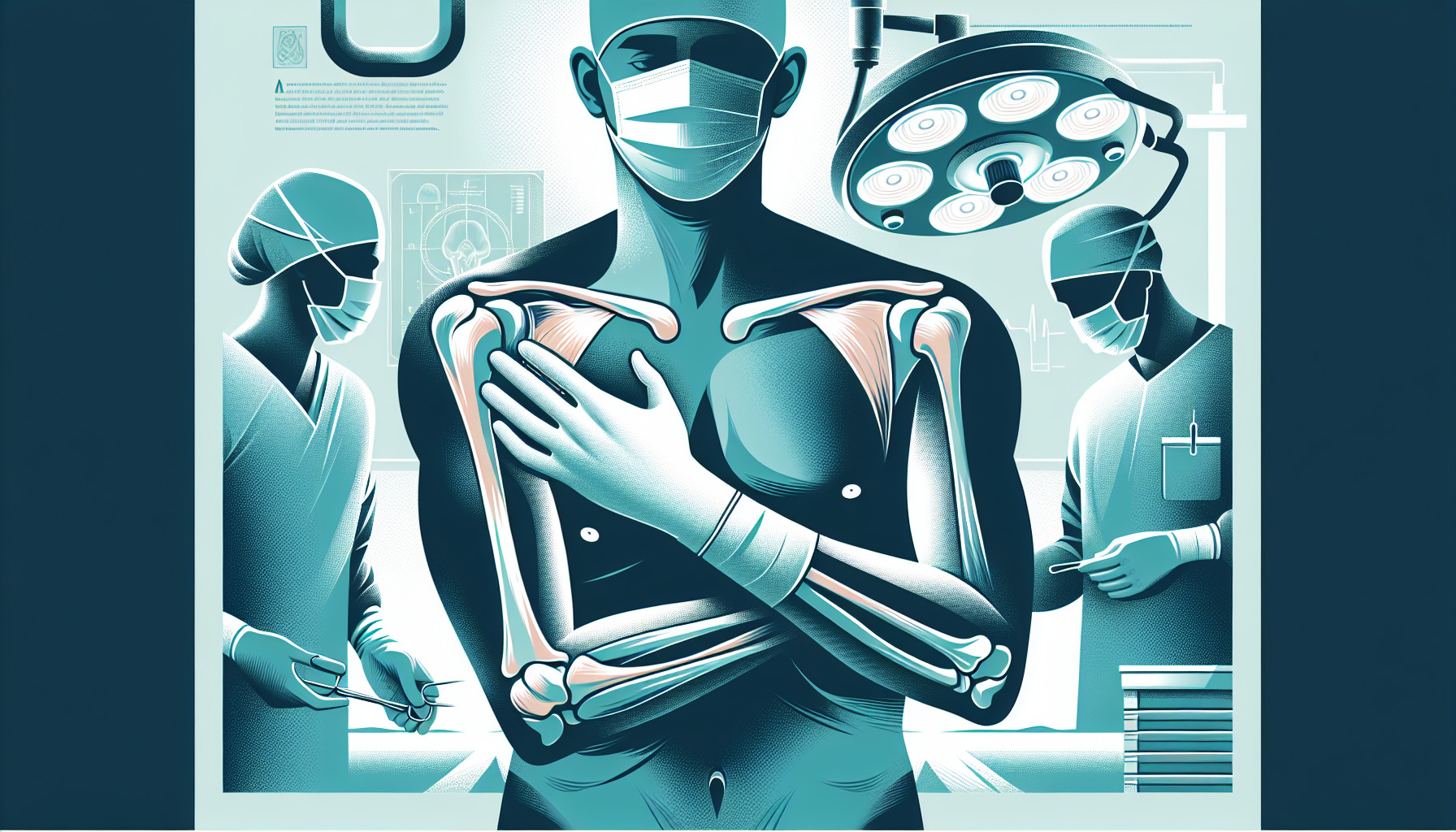Our Summary
This study aimed to understand how shoulder joint replacement surgery (specifically reverse total shoulder arthroplasty or rTSA) affects a person’s ability to sense the position of their shoulder joint. This sense of joint position is important for coordinated movement and stability.
The researchers tested 29 patients who had undergone rTSA in one shoulder and also 31 healthy individuals. They used a special measurement tool to assess errors in the patients’ ability to replicate specific shoulder positions. The positions tested included different degrees of forward flexion (leaning forward), abduction (moving the arm away from the body), and internal and external rotation.
The results showed that the shoulders which had undergone rTSA had a better sense of joint position compared to the patients’ other, non-operated shoulder. In fact, their sense of joint position was similar to that of the healthy individuals. This suggests that rTSA not only improves the mechanics and stability of the shoulder joint, but also enhances the feedback from muscles, which contributes to this sense of joint position.
In conclusion, it appears that rTSA can restore a person’s ability to sense the position of their shoulder joint, a function which is crucial for normal movement and stability.
FAQs
- What was the purpose of the study on reverse total shoulder arthroplasty (rTSA)?
- How does rTSA impact a person’s sense of joint position in their shoulder?
- What testing methods were used in the study to assess shoulder joint position following rTSA?
Doctor’s Tip
A helpful tip a doctor might give a patient about shoulder replacement surgery is to follow the post-operative rehabilitation plan carefully. This may include physical therapy exercises to strengthen the muscles surrounding the shoulder joint and improve range of motion. Consistent follow-up with the healthcare team is also important to monitor progress and address any concerns. Additionally, it’s important to avoid activities that could put excessive strain on the shoulder joint to prevent complications or damage to the implant. By following these guidelines, the patient can optimize their recovery and overall outcomes following shoulder replacement surgery.
Suitable For
Patients who are typically recommended for shoulder replacement surgery, such as reverse total shoulder arthroplasty, include those with:
- Severe shoulder pain that limits daily activities
- Arthritis in the shoulder joint
- Previous unsuccessful shoulder surgeries
- Rotator cuff tear that cannot be repaired
- Fractures in the shoulder joint that do not heal properly
- Chronic shoulder instability
- Inflammatory joint disease
- Avascular necrosis
It is important for patients to consult with a healthcare provider to determine if shoulder replacement surgery is the best treatment option for their specific condition.
Timeline
Pre-surgery:
- Patient experiences chronic pain and limited range of motion in the shoulder
- Patient undergoes various diagnostic tests to determine the extent of damage in the shoulder joint
- Patient consults with a surgeon to discuss the possibility of shoulder replacement surgery
- Patient undergoes pre-operative preparations such as physical therapy and medical evaluations
Surgery:
- Patient undergoes shoulder replacement surgery, specifically rTSA, to replace the damaged joint with artificial components
- Surgery typically takes a few hours and requires a hospital stay for recovery
- Patient undergoes post-operative rehabilitation to regain strength and range of motion in the shoulder
Post-surgery:
- Patient experiences initial pain and discomfort in the shoulder, which gradually improves with medication and physical therapy
- Patient gradually regains range of motion in the shoulder through rehabilitation exercises
- Patient follows up with the surgeon for post-operative appointments to monitor progress and address any complications
- Patient gradually returns to normal activities and experiences improved function and reduced pain in the shoulder
Overall, the timeline of a patient’s experience before and after shoulder replacement surgery involves pre-operative preparations, the surgical procedure itself, and post-operative rehabilitation to regain function and stability in the shoulder joint.
What to Ask Your Doctor
Questions a patient should ask their doctor about shoulder replacement surgery, specifically reverse total shoulder arthroplasty (rTSA), may include:
- What are the potential risks and complications associated with rTSA surgery?
- What is the expected recovery time and rehabilitation process after rTSA surgery?
- How long can I expect the shoulder replacement to last?
- Will I regain full range of motion and strength in my shoulder after surgery?
- How will rTSA surgery improve my quality of life and ability to perform daily activities?
- Are there any restrictions or limitations on activities I should be aware of after surgery?
- Will I need physical therapy after rTSA surgery, and if so, for how long?
- How often will I need to follow up with my doctor after the surgery?
- Are there any specific exercises or precautions I should take to help maintain the function of my shoulder joint after surgery?
- What are the alternatives to shoulder replacement surgery, and why is rTSA recommended for my specific case?
Reference
Authors: Walecka J, Lubiatowski P, Consigliere P, Atoun E, Levy O. Journal: Int Orthop. 2020 Dec;44(12):2691-2699. doi: 10.1007/s00264-020-04756-x. Epub 2020 Aug 15. PMID: 32803357
